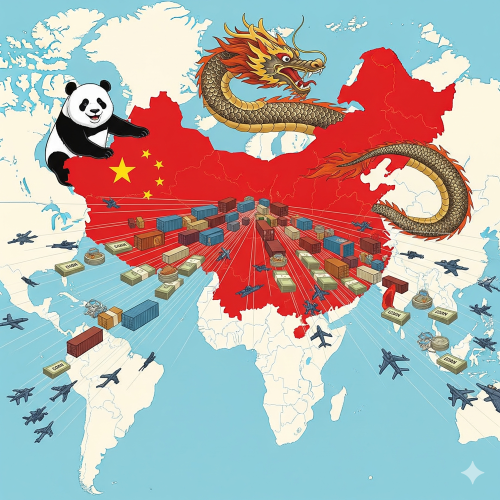How does China use soft power—such as cultural exchanges, Confucius Institutes, and media—across South America?

China uses soft power in South America by promoting its culture and language, shaping a positive image, and building long-term relationships through a variety of tools.
These efforts are designed to complement its economic influence and diplomatic relations, helping to normalize and solidify its presence in a region long considered a U.S. sphere of influence.
Confucius Institutes and Cultural Exchanges-
Confucius Institutes (CIs) are a core component of China's soft power strategy in South America. Operated by the Chinese government, these institutes partner with local universities to offer Chinese language courses, cultural workshops, and academic exchanges. There are over 40 CIs across Latin America and the Caribbean, with a strong presence in countries like Brazil, Argentina, and Chile.
The primary goals of these institutes are to:
-
Promote Mandarin language learning, which is increasingly in demand due to China's growing economic role.
-
Showcase Chinese culture through events like traditional festivals, martial arts demonstrations, and art exhibitions.
-
Facilitate academic collaboration, including scholarships for South American students to study in China.
While these activities are often welcomed as a way to foster cross-cultural understanding, they have also faced criticism. Critics argue that CIs are an arm of the Chinese government, and their presence on university campuses could lead to self-censorship on sensitive topics like Tibet, Taiwan, and human rights. In some cases, student and faculty groups have raised concerns about the lack of transparency in funding and the potential for a pro-Beijing bias in the curriculum.
The Role of Chinese State Media-
Chinese state media, including Xinhua News Agency, China Central Television (CCTV), and China Radio International (CRI), have significantly expanded their presence in South America. They produce content in Spanish and Portuguese, with the goal of "telling China's story well" and counteracting what Beijing views as a Western-centric narrative.
Their strategy involves several key tactics:
-
Content Sharing Agreements: Chinese state media have signed agreements with local newspapers, radio stations, and television networks to share content, including news articles and documentaries. This ensures that pro-China narratives are published in trusted, local outlets.
-
Direct-to-Audience Platforms: Outlets like CGTN Spanish broadcast 24/7 content, from news and documentaries to cultural shows and travelogues, directly to South American audiences.
-
Narrative Control: The media's content often focuses on the benefits of Sino-Latin American cooperation, highlighting investment projects and win-win economic partnerships. It also aims to discredit criticism of China and promote Beijing's diplomatic positions on international issues.
This media outreach is a powerful tool for shaping public opinion, presenting a positive image of China, and ensuring that a Chinese perspective is a part of the public discourse in a region where Western media has historically been dominant.
Public Diplomacy and People-to-People Exchanges-
Beyond institutions and media, China uses a range of public diplomacy initiatives to build a favorable image in South America. These efforts are designed to create a positive perception of China as a responsible global power and a reliable partner.
-
High-Level Visits: Chinese officials, including the president and ministers, frequently visit South American nations to sign agreements and engage with local leaders. These visits are a form of soft power, as they demonstrate China's commitment to the region.
-
Scholarship Programs: China offers thousands of scholarships for South American students to study at Chinese universities, often covering tuition, accommodation, and a living stipend. This fosters a new generation of elites who have a positive view of China and may become future cultural or economic bridges between the two regions.
-
Humanitarian Aid: During the COVID-19 pandemic, China provided significant medical aid and vaccines to many South American countries, earning goodwill and demonstrating its capabilities as a global leader.
In conclusion, China's soft power strategy in South America is a comprehensive and multi-layered effort. It leverages cultural outreach and media influence to cultivate a positive image, build trust, and create a favorable environment for its broader economic and political goals. While effective in many ways, it also faces scrutiny from those who view it as a tool for advancing state interests rather than genuine cultural exchange.
- Questions and Answers
- Opinion
- Motivational and Inspiring Story
- Technology
- Live and Let live
- Focus
- Geopolitics
- Military-Arms/Equipment
- Güvenlik
- Economy
- Beasts of Nations
- Machine Tools-The “Mother Industry”
- Art
- Causes
- Crafts
- Dance
- Drinks
- Film/Movie
- Fitness
- Food
- Oyunlar
- Gardening
- Health
- Home
- Literature
- Music
- Networking
- Other
- Party
- Religion
- Shopping
- Sports
- Theater
- Health and Wellness
- News
- Culture

